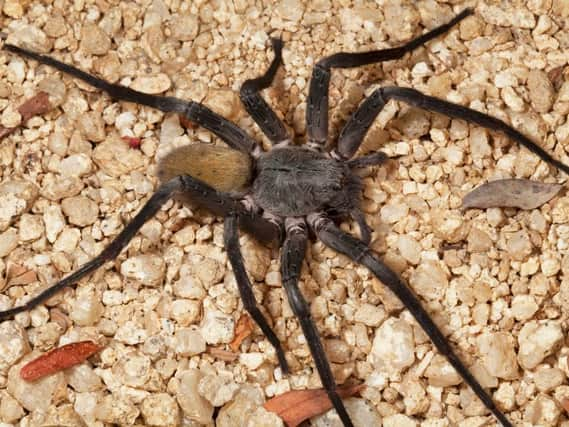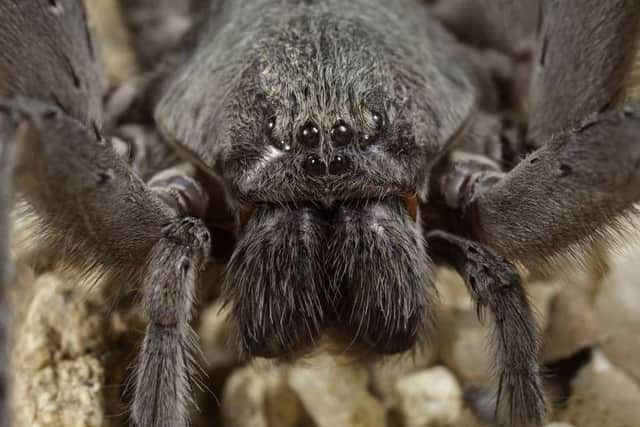New mega-spider bigger than a cricket ball discovered by scientists


Scientists have unearthed the massive cave-dwelling spider, the Sierra Cacachilas wandering spider.
It is related to the 'notoriously venomous' Brazilian wandering spider.
Advertisement
Hide AdAdvertisement
Hide AdIt was first found during a research expedition in Mexico and after four years of research, scientists have discovered the spider belongs to a new species and genus.


The Discovery
“The first evidence we found of this species was a shed exoskeleton in the cracks of a rock overhang,” said Jim Berrian, field entomologist at the San Diego Natural History Museum and one of the authors describing the new species.
“The exoskeleton was abnormally big and I could tell by the eye pattern that it was in a group of spiders, wandering spiders from the Family Ctenidae, with very few species in Baja California Sur, in Mexico."
Knowing that wandering spiders are often nocturnal, Berrian and colleagues returned to the same area that evening to find the first living specimen of Califorctenus cacachilensis.


Advertisement
Hide AdAdvertisement
Hide Ad“I knew the spider was unusual, but needed to get Dr. Maria Luisa Jimenez to look at it to make sure,” remarked Berrian. Dr. Maria Luisa Jimenez, a researcher at Centro de Investigaciones Biológicas del Noroeste and foremost expert on the spiders of Baja California Sur, was on route to join Berrian and colleagues as part of the expedition to the Sierra Cacachilas.
“When I saw these spiders for the first time, I was very impressed by their size,” said Jimenez. “In all my experience over the years collecting spiders on the peninsula, I had never seen a spider this large. I suspected that something new was waiting to be described.”
Is it Venomous?
Califorctenus cacachilensis is in the same group of spiders (Family Ctenidae) as the notoriously highly venomous Brazilian wandering spider.
“Almost all spiders are venomous, but very few are dangerous to humans,” said Berrian.
Advertisement
Hide AdAdvertisement
Hide Ad“I got bit while handling a live specimen of Califorctenus cacachilensis and I’m still alive. We haven’t analyzed the toxicity of the venom, but most wandering spiders are not as dangerous as the Brazilian wandering spider.”
What is a New Genus?
The Sierra Cacachilas wandering spider is so different from other related species that the authors of this study determined that they needed create an entirely new category for it, the genus Califorctenus.
“We made the case for this by comparing many species of wandering spiders from around the world and creating a phylogeny for the group,” said Dr. Daniele Polotow a researcher at University of Campinas in Brazil and expert on wandering spiders.
Scientific names reflect the distance of the relationship in the “evolutionary tree of life.” For example, humans are a species called Homo sapiens, and belong to a genus called Homo. Other primates, like chimpanzees in the genus Pan and gorillas in the genus Gorilla, are in a totally separate genera. Similarly, Califorctenus cacachilensis is so different that a new group had to be created for it.
Thankfully, the spider has not yet been spotted in the UK. In fact, the largest spider found in Britain is the Cardinal Spider, which 'only' measures up to 14cm in size.